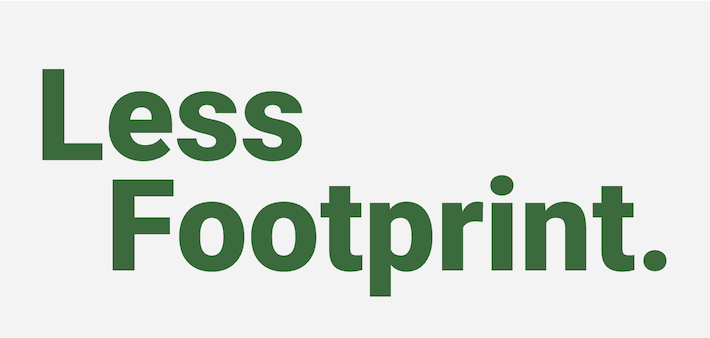The best outdoor adventure gear fades into the background and evades detection, so you can focus fully on the activity at hand. This is especially true with climbing shoes, where poor fit can severely detract from your climbing ability and comfort.
When it comes to choosing the best climbing shoe for you, there are three primary
considerations — shoe shape, closure type, and sizing.
Consideration 1: What Climbing Shoe Shape is Right for Me?
Before honing in on a specific shoe model, it can be helpful to consider which basic shoe shape you're aiming for. Climbing shoes come in three different fits — neutral, moderate, and aggressive.
Neutral shoes have a relaxed fit with a flat sole. They tend to be more comfortable to wear for long stretches, and are a great choice for beginning climbers, or for experienced climbers working through long multi-pitch climbs. Comfort is often a trade off for performance, and neutral shoes often won't perform as well on overhang and technical routes.
If you're just getting into climbing, a neutral fit shoe will likely be the best choice for you.
Moderate fit shoes are noted for their slight downturn shape, which is helpful for technical climbing. These all-purpose shoes can handle slab, cracks, multi-pitch, and slight overhangs. They'll have a thinner, stickier rubber, and in general won't last quite as long as neutral shoes.
If you're an intermediate+ climber looking for just a single pair of shoes to cover a variety of scenarios, consider a moderate fit shoe.
Aggressive fit shoes have a more aggressively downturned shape and introduce lots of heel tension, which positions your feet for challenging overhanging climbs. These shoes are often worn snugger, and reserved for single pitch sport climbs or gym routes, rather than a full day of multi-pitch climbing.
If you're an intermediate+ climber looking for a second pair of shoes to cover more technical climbs, an aggressive fit shoe may be your best option.
Consideration 2: Should I Get Lace, Velcro, or Some Other Closure Type for My Climbing Shoes?
Most climbing shoes come with either straps or laces as a closure. Shoes with laces allow for great customization of tightness and fit. If you're particular about how pressure spreads across the top of your foot and expect to fine tune your fit, choose a lace enclosure.
Other benefits? Laces can be replaced if they wear out, and they hold up better in certain climbing scenarios, like crack climbing.
Given those benefits, why are velcro shoes so popular? One word, convenience. Lace shoes can be a hassle to get on and off, which becomes acutely annoying if you mostly do short bouldering or gym climbs. Many climbers find velcro shoes to fit perfectly fine, no lace micro adjustments required.
Consideration 3: What Size Climbing Shoe Should I Get?
Climbers commonly wear 1-2 sizes smaller than their street shoes. Each foot is unique, and so each fit will also be unique. Here's a few tips for getting it right —
Climbing shoes should fit as snugly as possible without causing pain.
Importantly, your big toe should touch the end of the shoe. This is critical for secure foot placements. Roomy shoes are not your friend in climbing.
Most climbing shoes require a break-in period where the outer stretches to match your foot shape. Used shoes will already be broken in, and the feel won't change too much from how they fit the first time you try them on. New shoes, on the other hand, will stretch and loosen somewhat after a handful of uses.
Remember, each brand and model will have a different fit, and the only way to know what will work for you is to try on. If you have a climbing store where you live, we recommend taking advantage of their expertise, supporting small business, and buying your shoes locally. If that's not an option for you, consider a used climbing shoe, where the cost and inconvenience of incorrect sizing is not so high.
One last shoe sizing consideration — Euro sizing. Most shoe models are listed with a European shoe size. To estimate your climbing shoe size, look for your US street shoe size, subtract anywhere from 1 to 3, and find the equivalent Euro shoe sizes. This will be the size range most likely to work for you.
| Men | Women | Euro |
|---|---|---|
| 2.5 | 33 | |
| 3 | 33.5 | |
| 2.5 | 3.5 | 34 |
| 3 | 4 | 34.5 |
| 3.5 | 4.5 | 35 |
| 4 | 5 | 35.5 |
| 4.5 | 5.5 | 36 |
| 4.5+ | 5.5+ | 36.5 |
| 5 | 6 | 37 |
| 5.5 | 6.5 | 37.5 |
| 6 | 7 | 38 |
| 6.5 | 7.5 | 38.5 |
| 6.5+ | 7.5+ | 39 |
| 7 | 8 | 39.5 |
| 7.5 | 8.5 | 40 |
| 8 | 9 | 40.5 |
| 8.5 | 9.5 | 41 |
| 8.5+ | 9.5+ | 41.5 |
| 9 | 10 | 42 |
| 9.5 | 10.5 | 42.5 |
| 10 | 11 | 43 |
| 10.5 | 11.5 | 43.5 |
| 10.5+ | 11.5+ | 44 |
| 11 | 12 | 44.5 |
| 11.5 | 12.5 | 45 |
| 12 | 13 | 45.5 |
| 12.5 | 13.5 | 46 |
| 12.5+ | 13.5+ | 46.5 |
| 13 | 14 | 47 |
| 13.5 | 47.5 | |
| 14 | 48 | |
| 14.5 | 48.5 | |
| 15 | 49 | |
| 15.5 | 49.5 | |
| 16 | 50 |
What Else Should I Consider When Picking a Climbing Shoe?
Shoe Material
Shoes come in two basic material types — synthetic and leader.
Synthetic material shoes won't stretch as much as other styles of shoes, and so will often be bought a little bit larger than a leather shoe. Oftentimes, they will wick sweat and breathe well.
Unlined leather shoes will stretch quite a bit, up to a full size. When sizing an
unlined leather shoe, you should be able to feel, but not see, your toe knuckles pushing against the top of the shoe.
Lined leather shoes offer some combination of benefits from leather and synthetic. In this style, there will be a bit of stretching, likely around a half size.
Rubber Material
Rubber is a critical component of any climbing shoe, dictating how the shoe will grip the rock and how this will feel. Different shoes will have different types and
thicknesses of rubber. Some rubbers can be harder or softer, as well as grippier or slicker, than others.
Thicker shoes will be more durable, and can be more comfortable than shoes with a thinner outsole. However, thick rubber reduces ground-feel, which a thin soled shoe promotes.
Thicker rubber is typically found in beginner-intermediate oriented shoes.
Putting It All Together

Once you've figured out the fit, sizing, and shoe enclosure that will work best for you, you're ready to try on shoes. Every foot is different, and there's no single pair that will work for everyone. Through trying on a couple pairs (or if that's not an option, buying used), you're sure to find the perfect fit for you.




